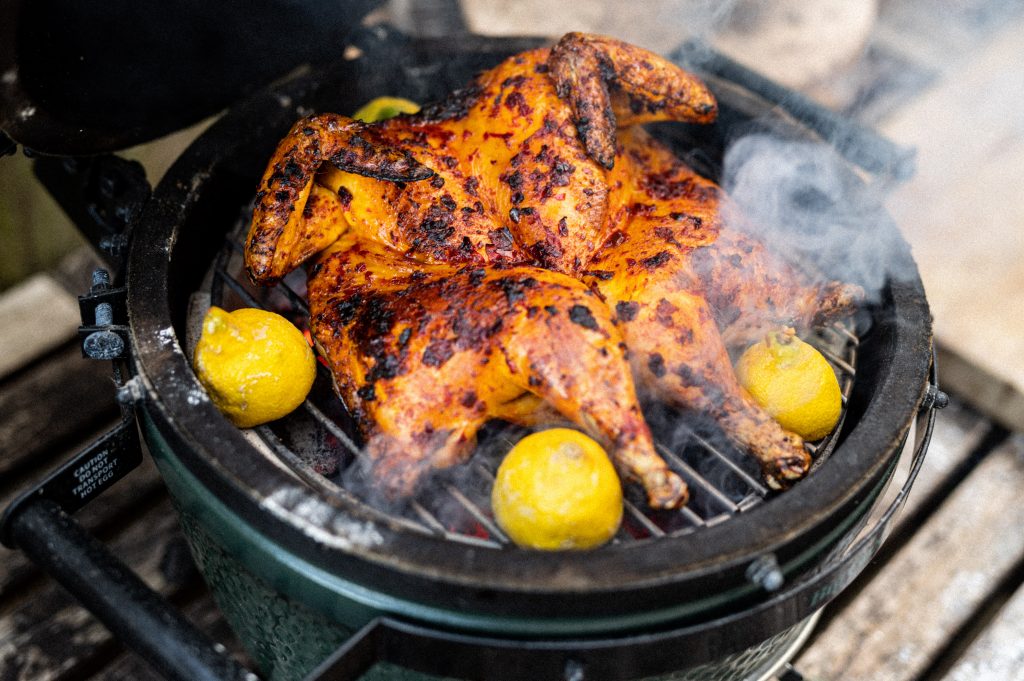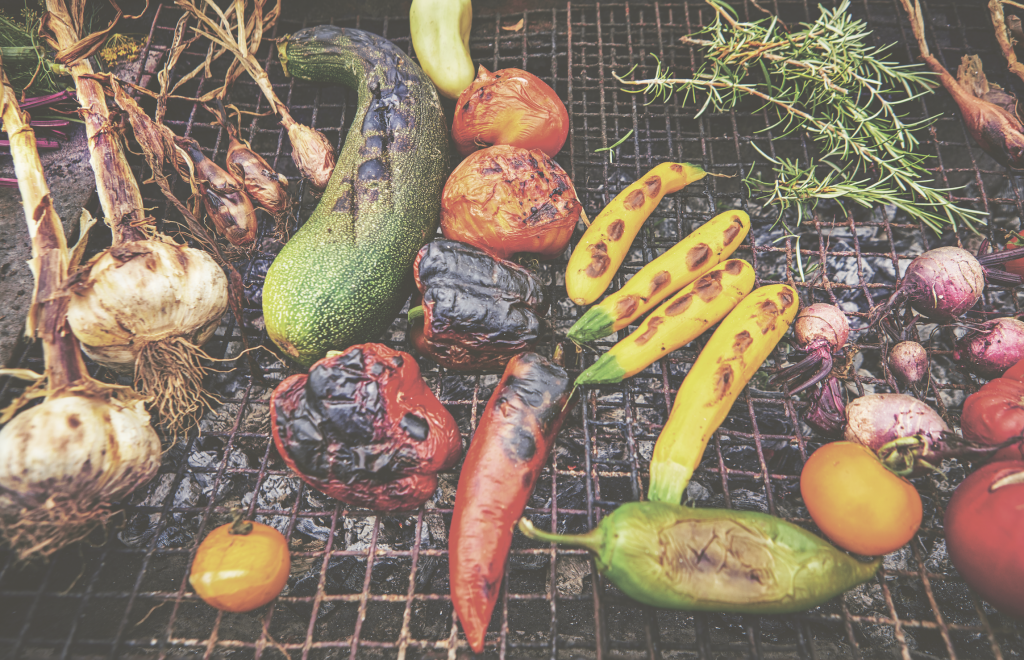The best BBQ Delivery Boxes in the UK from small sustainable British Farms
Cooking with fire seems like the simplest, most natural of things. But how come we often get it so wrong? We enlisted the experts to share their sustainable BBQ tips…
Summer brings blue skies, warm days and alfresco cooking over smouldering coals, smokey wood or efficient gas.
Whatever your chosen fuel, there are some fundamentals to mastering the art of cooking with fire. The first is taking control of the fire, by creating ‘heat zones’ and learning to cook ‘directly’ and ‘indirectly’, says expert Genvieve Taylor, author of Charred.
This means putting the charcoal on one side of your barbecue only and cooking off the direct heat source up to 80 per cent of the time.
Riverford chef Bob Andrew recommends you should arrange your fire into three rough zones:
1. At one end, you want a deep pile of hot, glowing embers for high-heat, direct cooking.
2. In the middle, rake a thinner layer of ebbing embers for indirect cooking.
3. At the other end, keep a space below the grill that’s fire-free. This is a great area to shift things to if you need to put cooking on hold, or a place to keep food that’s ready.
The goal is to end up with a spectrum of heat across the barbecue. You can feed new wood or coals into the hot end and shuffle everything along as you go. Simple, ey?
And don’t forget, you don’t always need to cook above the fire; you can cook in the embers, too.
Andrews says: “The embers hold their heat for a long time. Think of it like an oven: a surrounding cloak of heat into which you can tuck tasty morsels.
Sustainable BBQ: British charcoal
Four companies selling environmentally friendly charcoal from British woodland, recommended by Genevieve Taylor:
Whittle & Flame
Whittleandflame.co.uk
Birchwood Forestry
birchwoodforestry.co.uk
Stagg British Charcoal
stagbritishcharcoal.co.uk
Caradoc Charcoal
caradoccharcoal.co.uk
“Jacket spuds wrapped in foil is the classic campfire trick, but you can place some veg directly onto the embers; aubergines and onions can be blackened and blistered before peeled and serving.”
Adding sustainable BBQ fuel to the fire
Just as with ingredients, the best barbecues start with adding the best fuel to the fire. That means good charcoal that’s not laden with chemicals and imported from rainforests halfway across the world, but essentially pure carbon made from sustainable British woodland [see above].
The added benefit is this means you don’t have to wait for the coals to become white and ashy to get cooking. The main reason for doing this is to wait for all the chemicals to have burned away. Yup.
Opt for a natural firelighter for the same reasons, such as one made from woodchippings and wax.

Getting the fire started
You can buy a chimney starter to position the coals perfectly to get the party started quicker, or you can make your own using the method chef Tom Hunt learned in Argentina using some charcoal, a wine bottle, and some newspaper.
Sounds exciting and dangerous, doesn’t it? We must admit that building a fire in this does give you a huge sense of achievement. But as long as the bottle remains tightly shut, it’s pretty safe.
Simply place your bottle in the middle of the barbecue and roll three and four tubes of newspaper around it.
Next pour your lump wood charcoal around the sides, essentially burying the bottle. Carefully pull the bottle out leaving a hole, acting as a chimney.
Fill the chimney until it’s a third full with charcoal, use another tube of newspaper as a wick and light the paper. As the fire takes hold use the bigger lumps of charcoal to cover the hole and in 15 minutes you’ll be ready to get cooking.

No smoke without… wood
Note, good coal doesn’t produce much smoke, so if you’re looking for that smokey flavour try some kiln-dried firewood from the likes of The Smokewood Shack.
Whatever wood you choose to use, make sure it’s dry, hasn’t been treated, and isn’t too resinous, advises Andrew.
Some people insist on using oak, while others like the apparent sweetness of fruit woods like apple or cherry. Throwing herbs like rosemary or sage into the fire is also said to give extra flavour.

Time to get cooking…
We asked some of our favourite chefs and recipe writers what they are cooking over fire this summer, and here are their top tips for how to barbecue meat, fish and veg and fruit.
Originally published in June 2022.


